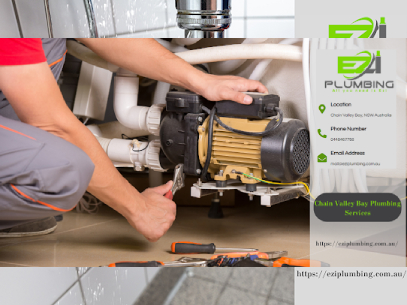Congratulations on your new home! As you settle in and start setting up your kitchen, it’s easy to overlook some of the essential components that keep your refrigerator running smoothly. Fridge plumbing is one of these crucial, yet often underestimated, aspects. Proper fridge plumbing ensures your appliance operates efficiently, provides clean water for ice and chilled beverages, and prevents potential leaks that could lead to costly repairs. In this guide, we’ll walk you through everything you need to know about fridge plumbing, from installation tips to maintenance practices, to keep your fridge functioning seamlessly.
Understanding Fridge Plumbing
Fridge plumbing typically involves connecting your refrigerator to your home’s water supply. This connection is crucial if your fridge has an ice maker or water dispenser. Here’s a breakdown of what you need to know:
Water Supply Connection
Modern refrigerators equipped with ice makers and water dispensers need a continuous water supply. This is typically achieved by connecting the fridge to your home’s plumbing system via a dedicated water line. Ensuring a reliable connection is crucial for uninterrupted access to chilled water and ice.
Drainage System
Some refrigerators require a drainage system to manage condensation and excess water. Proper drainage prevents water from accumulating inside or around the appliance. Without effective drainage, moisture can lead to mold growth, unpleasant odors, and potential damage to flooring or cabinets, affecting the fridge’s overall performance.
Cooling Mechanism
The efficiency of a fridge’s cooling mechanism depends on its plumbing system. A clean, well-maintained water supply supports optimal cooling performance, while a free-flowing drainage system prevents excess moisture buildup. Both factors contribute to the applicant’s ability to maintain the correct temperature and function smoothly.
Installing Your Fridge’s Plumbing
When setting up the plumbing for your fridge, there are several key steps to follow to ensure a successful installation:
Locate the Water Supply
To connect your fridge, first locate the nearest water supply line, which is typically found under the sink or near the basement. Ensure the water line is accessible and can be easily connected to the fridge. Proper access is essential for a smooth and trouble-free installation process.
Choose the Right Water Line
Select the appropriate water line for your fridge connection, typically a 1/4-inch plastic or copper line. Plastic lines are easier to install but may not be as durable as copper lines. Choose the material based on your needs, considering factors such as installation ease and long-term reliability.
Install a Water Valve
Install a shut-off valve on the water supply line to control the flow of water to the fridge. This valve allows for easy shut-off during maintenance or emergencies, such as leaks. Ensure the valve is installed correctly and is easily accessible for quick operation when needed.
Connect the Water Line
Attach one end of the water line to the fridge’s water inlet valve and the other end to the shut-off valve on the water supply line. Ensure all connections are tight and secure to prevent leaks. Properly securing these connections is crucial for a leak-free operation.
Check for Leaks
After connecting the water line, turn on the water supply and thoroughly check for leaks. Inspect all connections and fittings for any signs of dripping or pooling. If any leaks are detected, tighten the connections or recheck the water line and valves for proper installation.
Connect the Drainage System
If your fridge includes a drainage system, connect it following the manufacturer’s instructions. Ensure the drainage hose is properly positioned and secured to prevent leaks. Proper connection and positioning of the drainage system are essential to ensure efficient water flow and prevent potential issues.
Maintaining Your Fridge Plumbing
Proper maintenance is key to ensuring your fridge plumbing system remains in good working order. Here are some essential maintenance tips:

Regularly Check for Leaks
Periodically inspect the water line, shut-off valve, and drainage system for signs of leaks or damage. Look for any water pooling or dampness around these areas. Promptly address any issues to prevent potential water damage to your home and ensure the fridge continues to operate efficiently.
Clean the Water Filter
Refrigerators with water dispensers often have a water filter that requires regular cleaning or replacement. Follow the manufacturer’s guidelines for maintaining the filter. A clean filter ensures that the water dispensed is fresh and free from contaminants, contributing to the overall efficiency and safety of your fridge.
Inspect the Drainage System
Regularly check the drainage system for blockages or buildup that could affect performance. Ensure the drainage hose is clear of obstructions and correctly positioned to prevent water from pooling inside or around the fridge. Proper maintenance prevents potential leaks and damage to flooring or cabinets.
Test the Water Supply
Periodically test the water supply to ensure it’s delivering adequate pressure and functioning properly. Watch for any signs of weak water flow or unusual noises, which may indicate issues with the water line or connections. Address any problems promptly to maintain optimal performance of your fridge.
Keep the Area Around the Fridge Clean
Maintain a clean and dry area around the fridge to prevent mold growth and potential water damage. Regularly wipe up any spills or leaks and keep the space free from dust and debris. A clean environment helps ensure the fridge operates efficiently and minimizes maintenance needs.
Troubleshooting Common Issues
Even with proper installation and maintenance, you might encounter some common fridge plumbing issues. Here’s how to troubleshoot and resolve them:
Regularly Check for Leaks
Periodically inspect the water line, shut-off valve, and drainage system for leaks or damage. Look for signs of water pooling or dampness in these areas. Addressing any issues immediately prevents water damage and ensures your fridge operates efficiently without disruptions.
Clean the Water Filter
Refrigerators with water dispensers often have a water filter that needs regular cleaning or replacement. Follow the manufacturer’s instructions for maintaining the filter. A well-maintained filter ensures that the dispensed water is clean and fresh, improving the fridge’s efficiency and water quality.
Inspect the Drainage System
Regularly check the drainage system for any blockages or buildup that might impact performance. Ensure the drainage hose is clear and correctly positioned. Proper maintenance prevents water pooling around the fridge, which could cause damage to flooring or surrounding cabinetry.
Test the Water Supply
Periodically test the water supply to ensure it’s delivering sufficient pressure and working properly. Look for weak water flow or unusual noises that may indicate issues with the water line or connections. Promptly addressing these issues maintains the fridge’s optimal performance.
Keep the Area Around the Fridge Clean
Maintain a clean and dry area around the fridge to avoid mold growth and potential water damage. Regularly clean up spills or leaks and keep the space free of dust and debris. A clean environment supports the fridge’s efficiency and reduces maintenance needs.
New Homeowner’s Guide to Efficient Fridge Plumbing
For new homeowners, understanding how to set up and maintain efficient fridge plumbing is crucial. Proper fridge plumbing ensures that your refrigerator’s ice maker and water dispenser function correctly, while also preventing potential leaks and water damage. Start by locating the nearest water supply line, typically found under the sink or near the basement. Choose the appropriate water line, either plastic or copper, and install a shut-off valve to control the water flow. This step is essential for easy maintenance and emergency shut-off in case of leaks.
Once you’ve connected the water line, check for leaks by turning on the water supply and inspecting all connections. Ensure the drainage system is properly installed and free from blockages to prevent water pooling. Regularly maintain the system by cleaning the water filter, inspecting the drainage hose, and keeping the area around the fridge clean. These practices not only ensure your fridge operates efficiently but also help avoid costly repairs and water damage in the long run.
Fridge Plumbing Basics Every New Homeowner Should Know
Setting up fridge plumbing correctly is a fundamental aspect of home maintenance for new homeowners. Begin by connecting your refrigerator to the water supply line, which is essential for models with ice makers and water dispensers. Use a 1/4-inch plastic or copper water line, depending on your preference and installation ease. Install a shut-off valve on the water line to allow for easy control of the water flow during maintenance or emergencies. Proper installation ensures that the fridge operates smoothly and reduces the risk of leaks.
In addition to connecting the water line, pay attention to the drainage system to prevent any potential issues. Regularly inspect and clean the drainage hose to avoid blockages that could cause water damage. Test the water supply periodically to ensure it’s functioning properly and delivering adequate pressure. Maintaining a clean and dry area around the fridge is also essential to prevent mold growth and ensure the appliance remains in top condition. Regular checks and maintenance will help keep your fridge plumbing running efficiently.
Conclusion
Proper fridge plumbing is crucial for new homeowners to ensure a smoothly operating refrigerator and to prevent potential issues such as leaks and water damage. By following essential steps like connecting the right water line, installing a shut-off valve, and regularly maintaining the drainage system, homeowners can enhance the efficiency and longevity of their fridge. For expert assistance or if any issues arise, don’t hesitate to contact EZI Plumbing in Valley Bay, AU. With a quick call to 0448467788, professional help is available to keep your fridge plumbing in optimal condition and address any concerns effectively.

